By Lauren Nagel
Calculating propeller thrust is a useful part of the aircraft design process. It can help you choose the right components and determine your limits for useful load.
Calculations are based on assumptions and will only take you so far, which is why we recommend using a thrust stand to measure propeller thrust in order to validate calculations.
In this article we will cover both - the theoretical side that relies on equations and assumptions, and the practical side that uses physical testing to obtain true values. We will also show you how to use a propeller thrust calculator that estimates performance based on your inputs and real propeller data.
Table of Contents:
- How do propellers generate thrust
- Propeller thrust equation
- Propeller thrust calculator
- How to measure propeller thrust with a thrust stand
- Example: how to determine a propeller's thrust

How do Propellers Generate Thrust?
A propeller, whether on an aircraft or drone, generates thrust by accelerating air. The propeller blades are shaped to create a pressure difference between their front and back surfaces, causing air to be drawn in and then expelled at a higher velocity. For traditional aircraft, this results in forward motion. For drones hovering or ascending, the propellers push air downwards, producing an upward thrust.
If propellers are damaged or imbalanced, it can induce vibration that negatively affects performance.
Propeller Thrust Equation
Propeller thrust is dependent on the properties of the propeller and the air around it. This can be expressed in a few different ways.
We will first look at an equation for static propeller thrust, for a propeller that is stationary in a no wind condition.
Then we will look at an equation for dynamic propeller thrust.
Further reading: Propeller Testing with a Wind Tunnel
Static Propeller Thrust Equation
First, thrust is dependent on the mass flow rate of the air and the change in air velocity:

The mass flow rate can be expressed in terms of the air density, air velocity at the propeller (Vₚ), and the area covered by the propeller:

Therefore we can rewrite the equation for propeller thrust as:

While Ve and V0 can be measured, Vp is harder to quantify. We can solve for this by thinking about thrust as the force on the propeller disk, which is equivalent to the change in pressure across the disk times the area:

and:

Therefore:

So in order to calculate propeller thrust, we need the air density, the radius of the propeller, and the air velocity entering and exiting the propeller.
On their website, NASA shows how the equations above are derived using Bernoulli’s principle.
Dynamic Propeller Thrust Equation
When calculating dynamic propeller thrust, we have to consider the forward airspeed of the propeller / aircraft, as well as the RPM and propeller dimensions:

This equation was derived by Electric Aircraft Guy. It uses propeller diameter, pitch, propeller forward airspeed, and RPM.
It is important to note that a correction has been applied to allow the user to enter propeller diameter in inches rather than meters.
He has also applied correctional constants to bring the results closer to data he measured, but he estimates it will still underestimate thrust by 15-30%.
Propeller Thrust Calculator
Mejzlik Propellers offers static and dynamic thrust calculators, which can be used to estimate the thrust produced by a propeller.
The way the calculators work is by interpolating data based on the performance of propellers Mejzlik has tested. According to their website, this covers multicopter propellers ranging from 10’’ to 48’’ in diameter.
Static Propeller Thrust Calculator
To calculate static thrust, all you need to enter is:
- Diameter
- # of blades
- Thrust/ prop
- Air density
- Motor efficiency
We used this calculator to find out how much weight a drone can carry. Here’s what the interface looks like:

Figure 2: Mejzlik’s propeller static thrust calculator
Dynamic Propeller Thrust Calculator
The dynamic calculator requires the following:
- Motor inputs (Io, Rm, KV, ESC efficiency)
- Propeller diameter
- Propeller pitch
- Air density
- Drag
- Aircraft speed
The calculators generate graphs comparing thrust and efficiency at different RPM values. They also estimate power consumption and compare your results with those for similar propeller sizes.
It can be a great tool if you’re asking yourself: “what size of propeller do I need for my build?” and need a place to start.
The calculators come with the following disclaimers:
- They are limited to multicopter propellers, so you cannot adjust the propeller pitch (an optimal pitch is chosen for you)
- The RPM and power values are applicable for Mejzlik multicopter propellers only
- The accuracy is reduced as the # of blades increases
- Motor data should be verified with the manufacturer
Learn more about Static and Dynamic Propeller Balancing Techniques
How to Measure Propeller Thrust with a Thrust Stand
If you really want to know how much thrust a propeller can produce, the best thing to do is to test it. Our thrust stands support static and dynamic testing, so we’ve got you covered no matter what you need to measure.
Here’s what you’ll need in order to test your propeller’s thrust:
- Propeller
- Motor
- ESC / motor controller
- Thrust stand
- Power source
- Testing software

Once you’ve gathered the equipment you need, it’s time to set-up your thrust test:
- Secure the thrust stand to a hard surface
- Attach your ESC and motor to the thrust stand
- Attach your propeller to your motor
- Connect the thrust stand to the power source and software
- Control the thrust stand with the software and watch the data come in
In this video we show you how to perform this set-up, plus we use a wind generator to get dynamic results that are extra realistic:
For propeller testing, you’ll most likely be interested in propeller thrust data as well as propeller efficiency, both of which are recorded by the software.
Here’s an example of what the exported data looks like:

Example: How to Determine a Propeller's Thrust
There are a few ways to find out if a given propeller can produce the thrust you need, and you can often use these techniques in combination.
Let’s say we are building a quadcopter drone that weighs 40 kg in total, and we want to be able to generate twice the thrust required at hover for good maneuverability, so 80 kgf.
Divided by four propellers, this means we will need to be able to generate 20 kgf of thrust per propeller.
How can we find a propeller that generates enough thrust? We will follow these steps:
- Check the propeller database for thrust data
- Use a propeller thrust calculator
- Test the propeller with a thrust stand
Check the Propeller Database
We host a free database of drone motor and propeller data. Data is contributed by users who have used our thrust stands to test their propellers.
To find out what size of propeller can produce 20 kgf of thrust, we will click on the “Test Data” heading and then “Add filters”. Next we click on “Data”, “Powertrain Data”, and choose “Thrust (kgf)” from the first drop down menu, followed by the “≥” in the next drop down menu, and finally we manually enter 20 in the last box. Finally, we can click “Apply Filters”.
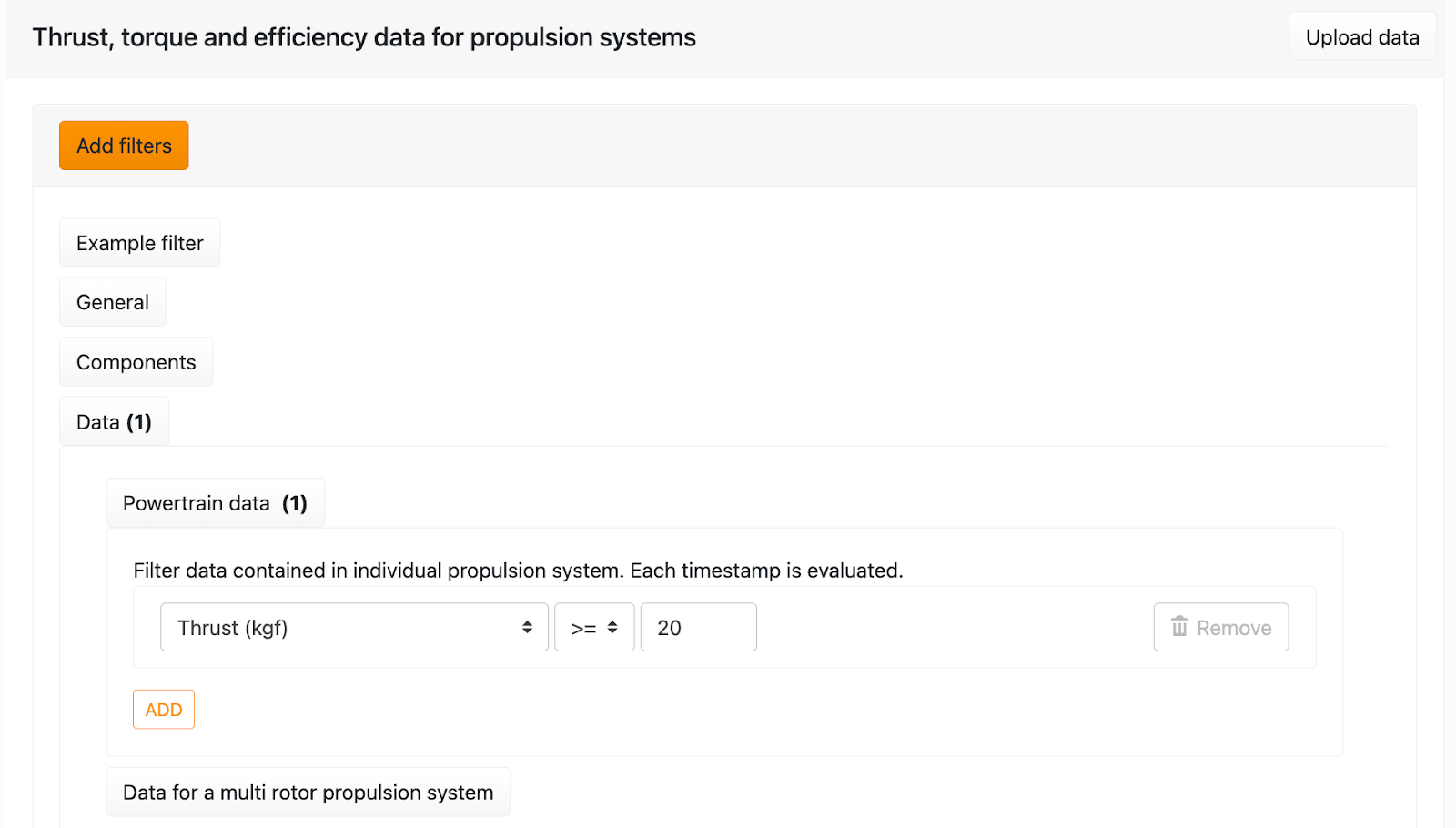
These settings will show us all the tests performed with propellers that generated at least 20 kgf of force.
In the table that appears, we can first look at the “Propellers” column, which gives us a snapshot of the diameter and pitch of the propellers that fit our criteria. If we want to learn even more about them, we can click on each test to get more details and data.
For this 62” propeller for example, we can see that it produces over 20 kgf of thrust:
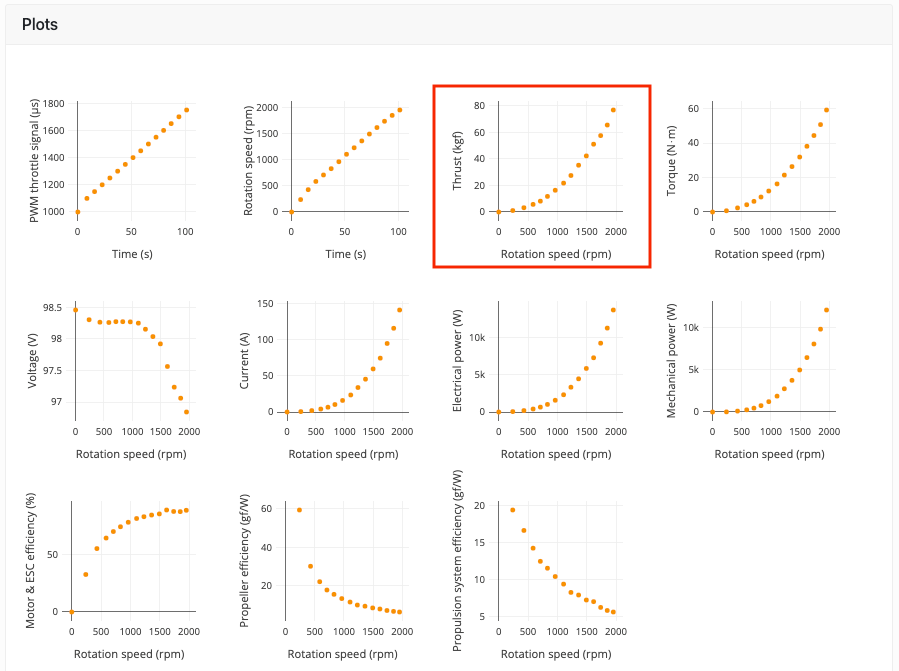
Figure 6: Propeller data table from the database
That said, it produces a lot more thrust than we need, meaning it's probably larger than necessary. We can look at other results to find a propeller that would give us enough thrust without going overboard. This will ensure we’re not carrying more weight than we need to be.
This 48” propeller with a pitch of 10 is a good example, as it produces thrust up to 20 kgf, but not much beyond that:
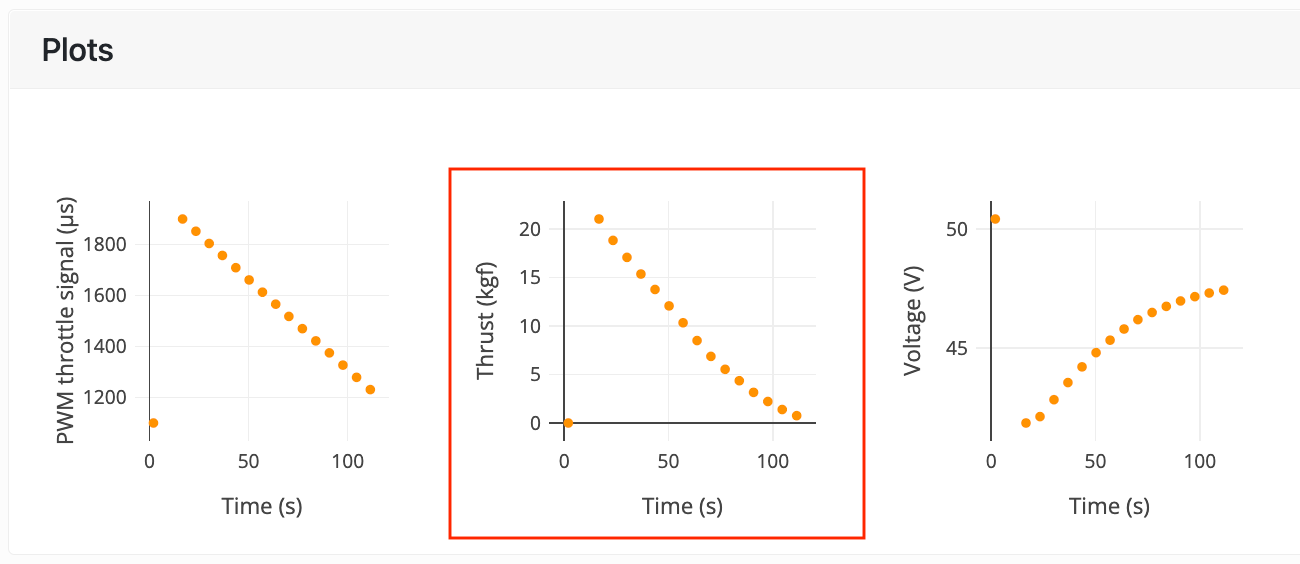
Figure 7: Propeller thrust graph for a 48” propeller
Propeller Thrust Calculator
We can enter the properties of our motor, propeller and environment into the static propeller thrust calculator to estimate our propeller’s performance.
We recently discovered that the average max efficiency of a brushless motor is about 78%, so we will assume that this is our motor’s efficiency.

Figure 8: Propeller thrust calculator output
The calculator results tell us that a 48” propeller can in fact generate 20 kgf of thrust at an RPM of 1880.
Thrust Stand Results
We can now test our 48” propeller using a thrust stand to confirm that it produces the thrust we need. We can also measure its efficiency and compare it with other propellers to find the most efficient one.
A thrust stand such as the Series 1585 works great for smaller propellers up to 5 kgf, but we need to measure up to 20 kgf, so the Flight Stand 50 will work best.
We mount our motor and the 48” propeller on the Flight Stand 50, then run a manually controlled test using the Flight Stand Software. We gradually drag the throttle up, seeing if we reach our needed thrust of 20 kgf.
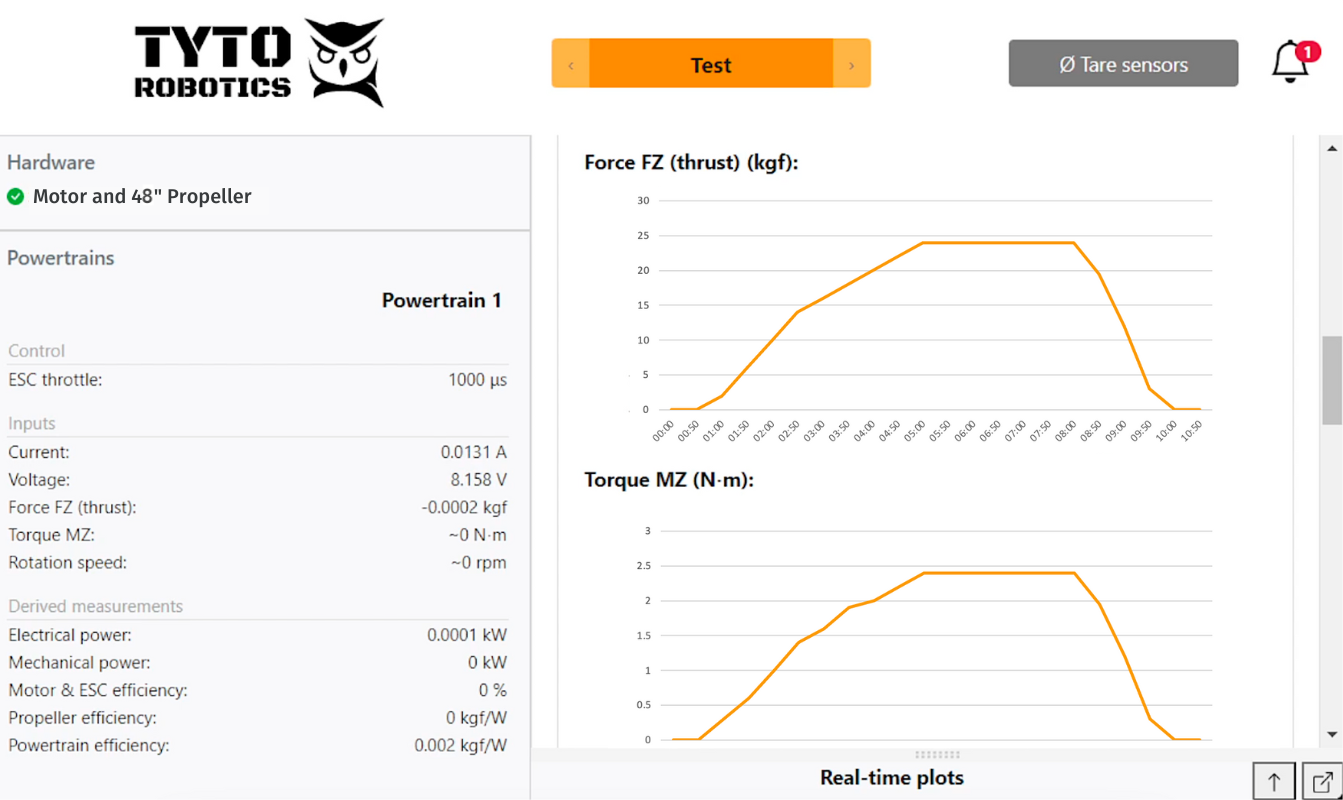
This test confirms that this propeller can provide us with the thrust we need. We can repeat the test using different propellers of similar diameter, pitch and material to see which one is most efficient in our operating range of 10 to 20 kgf.
Compare the Results
We exported the data from the test on the thrust stand and plotted the results side by side with the results from the thrust calculator (figure 10).
Interestingly, the thrust calculator underestimated the performance of the propeller. At all RPM values, the thrust measured by the thrust stand was higher than that estimated by the calculator.
This is generally the preferred scenario, rather than the calculator overestimating performance and the aircraft underperforming.

This difference is likely caused by slight differences in the propeller - for example, the one we used may have a different pitch than what is assumed by the calculator.
It goes to show that if you want to know the true thrust and performance of your propeller, physical testing is the way to go.
Conclusion
In conclusion, there are many ways to estimate the thrust produced by your propeller using equations and thrust calculators.
However, if you want to know how much thrust they really produce in your propulsion system, the best way to find out is by testing them with a thrust stand.
To learn more about propeller performance, check out our white paper on how Propeller Imbalance Affects UAV Performance.
If you would like to test your propellers, check out our propeller test stands:
- Series 1585 - measures up to 5 kgf of thrust / 2 Nm of torque
- Flight Stand 15 - measures up to 15 kgf of thrust / 8 Nm of torque
- Flight Stand 50 - measures up to 50 kgf of thrust / 30 Nm of torque
- Flight Stand 150 - measures up to 150 kgf of thrust / 150 Nm of torque
- Flight Stand 500 - measures up to 500 kgf of thrust / 1500 Nm of torque

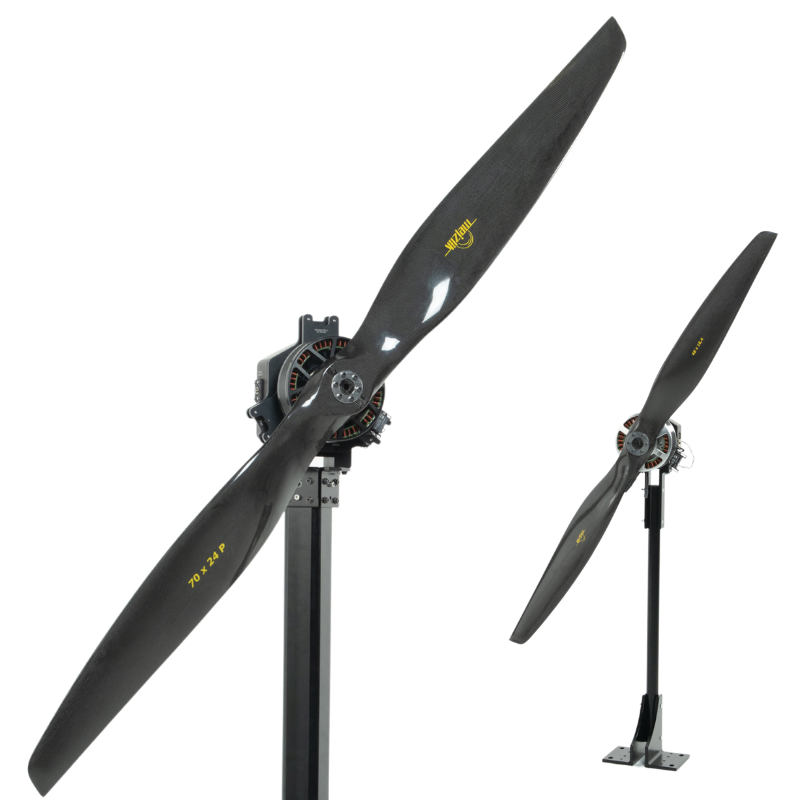
 Back to Blog
Back to Blog

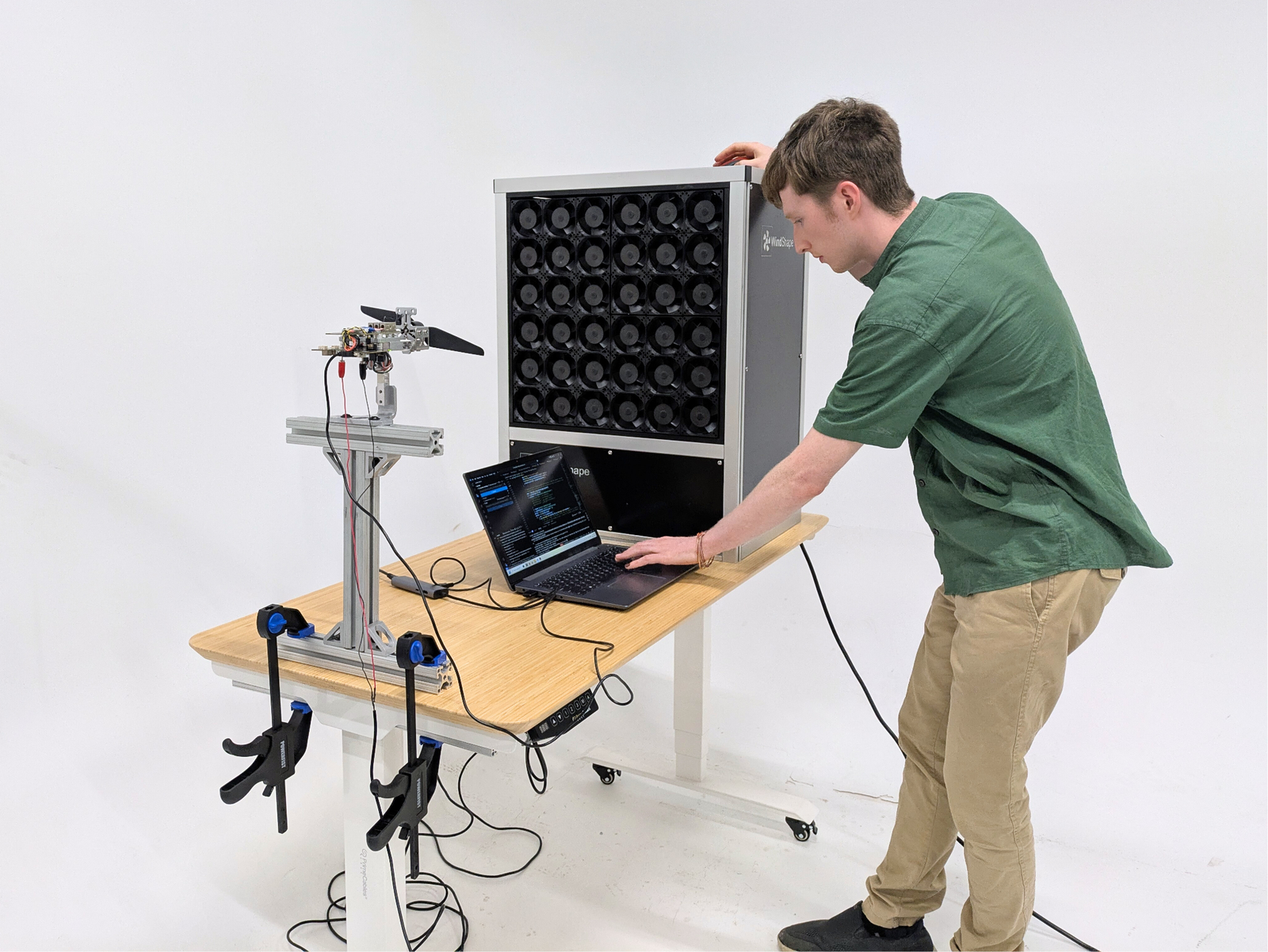
Mike Kelly
November 10, 2025
Thanks for this helpful article. My understanding is that dynamic thrust is not linear with entrance velocity. If we have a drone that cruises faster than what your wind shapers can produce, is there a way to extrapolate the dynamic thrust available from a motor/prop at those higher speeds?